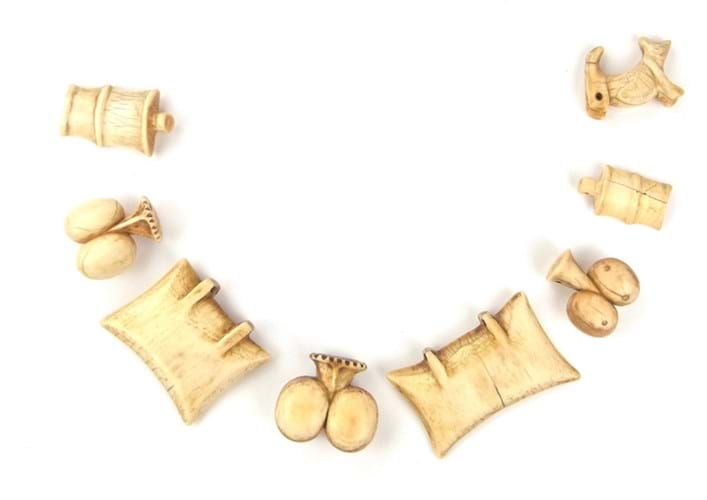
Carved from whalebone in the 18th-19th centuries in the southern Cook Islands, the pieces would have been originally been suspended at regular intervals from a woven cord typically made of human hair and coconut fibres.
These necklaces are now among the rarest and most sought-after of all Polynesian artefacts and only around 20 are known to exist.
A few examples have fetched big money at auctions in the UK and US in the last 10 years. One fetched £99,000 at Ewbank’s of Send in Surrey on December 2016 – it had been catalogued simply as ‘ethnic carved bone and antler necklace’ and estimated at £60-100.
Another made $302,500 (£199,620) including premium at Sotheby’s New York in May 2010.
The pieces at Grand Auctions lack the hair stringing of the original necklace and will be offered together with an estimate of £800-1200 at the auction on July 9.
Elegant carving
The chain of islands extending through the Austral group to Mangaia in the southern Cook Islands is known for producing some of the most elegant of all Pacific necklaces.
The precise meaning of the carved amulets is unknown but it is possible those similar to testicles performed a fertility function.
A similar necklace or tabua in the British Museum was bought in 1911 from the London Missionary Society in Mangaia. Another in the Te Papa Tongarewa museum, Wellington, was acquired in 1948 when the New Zealand government bought the Māori and Pacific collection of the London dealer WO Oldman for about £40,000.




